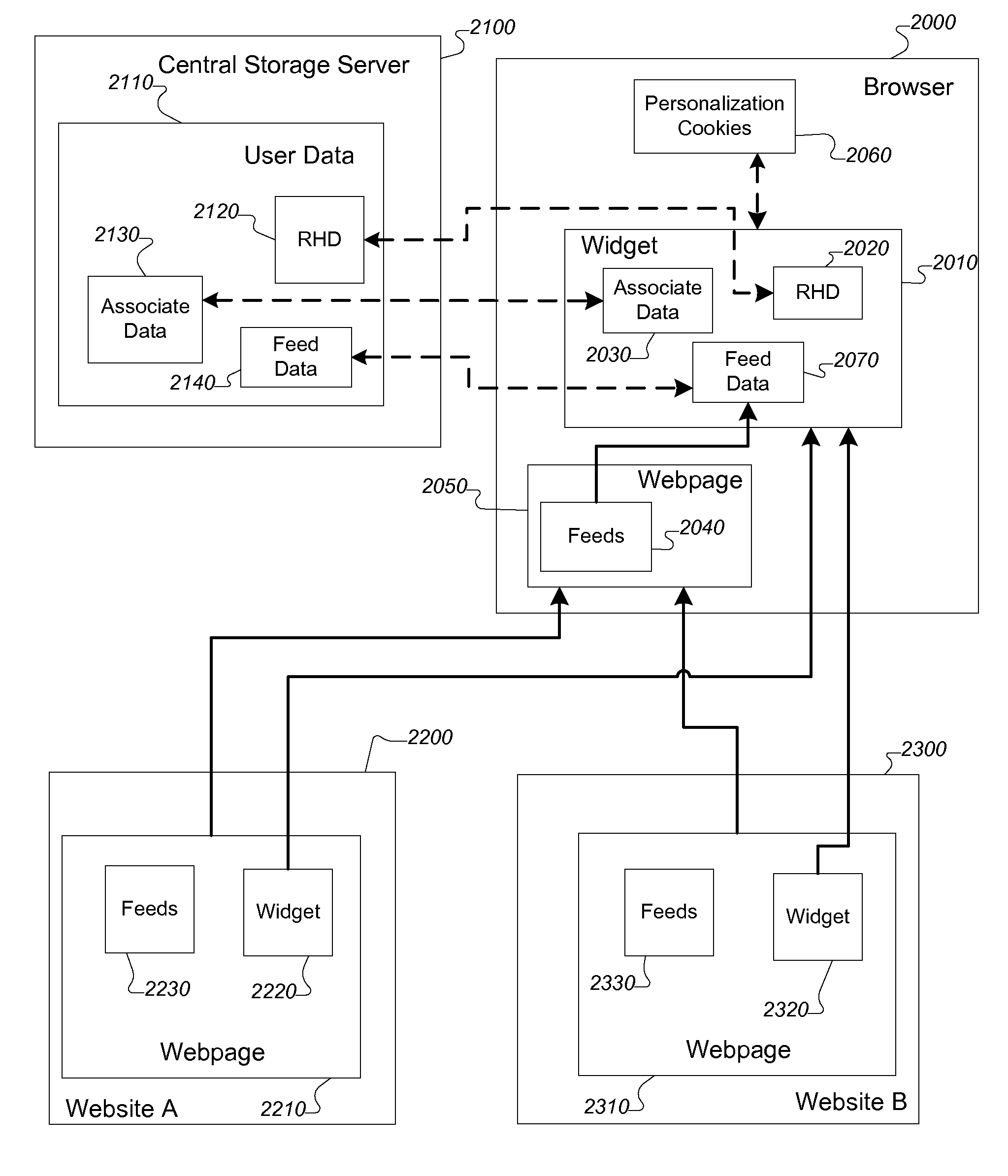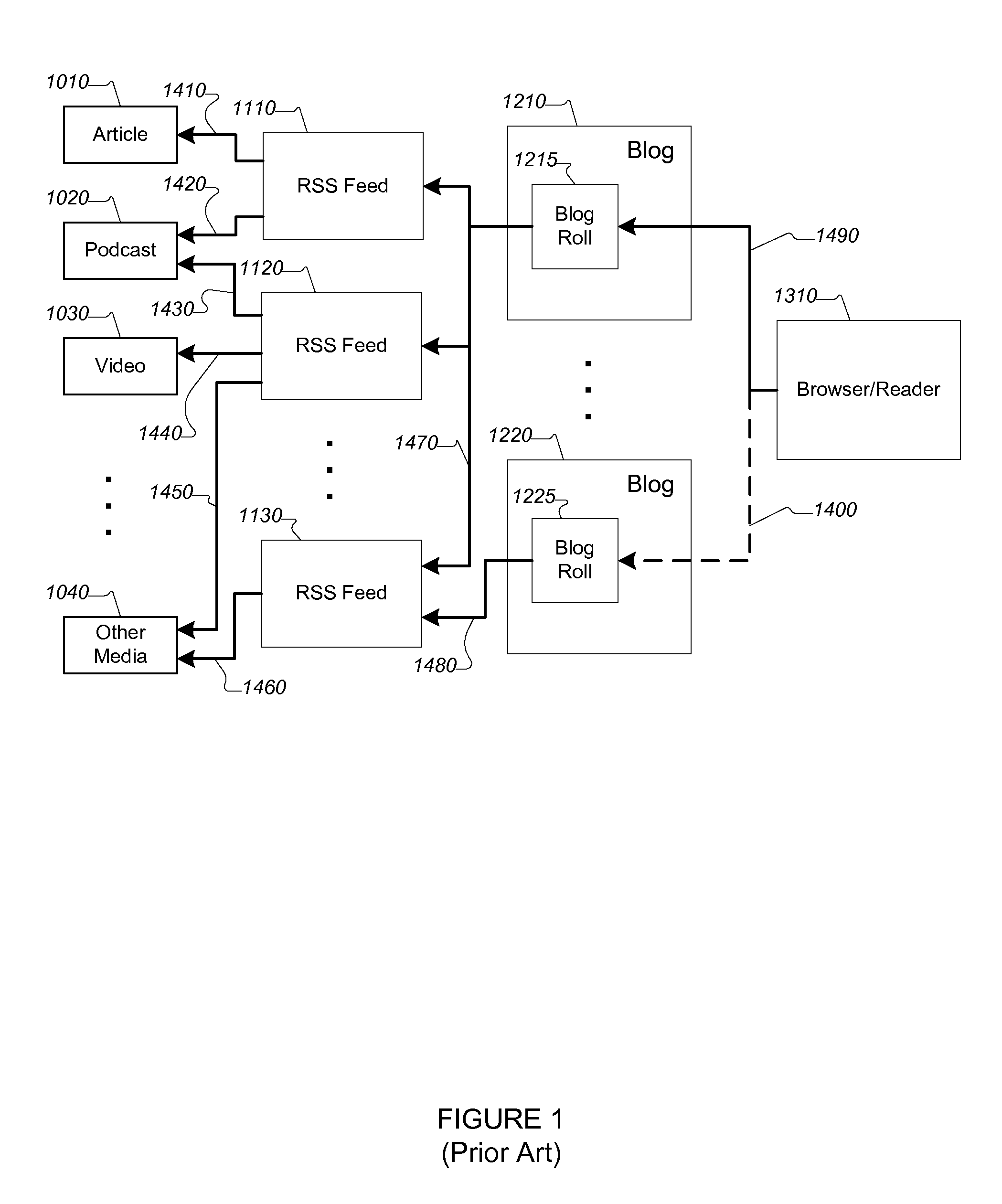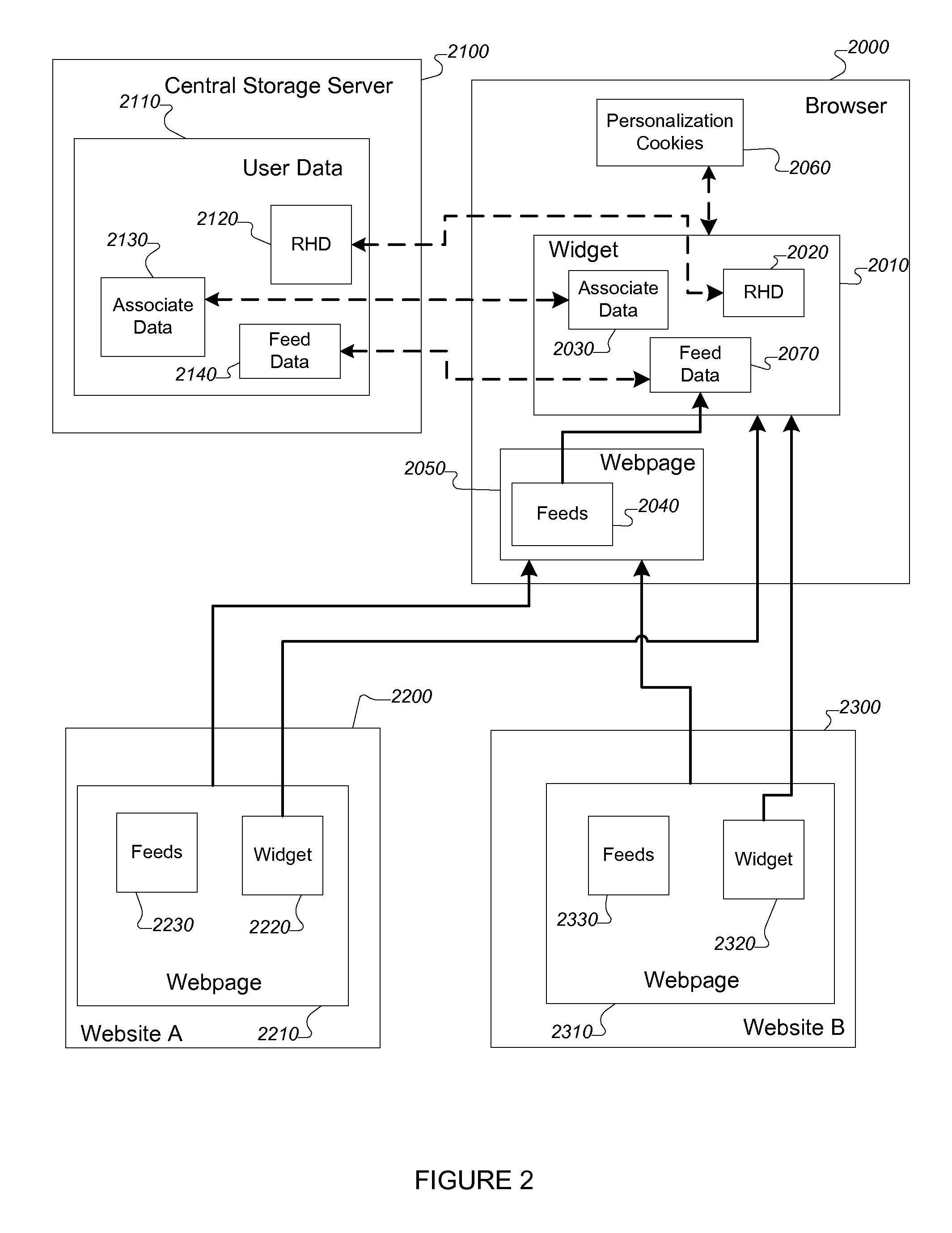Cross-website management information system
a technology of information system and website, applied in the direction of electric digital data processing, instruments, computing, etc., can solve the problems of limited reader software, limited activities of web widgets, limitations placed on their activities, etc., to improve the ability of users to access and ease the workload of website maintainers
- Summary
- Abstract
- Description
- Claims
- Application Information
AI Technical Summary
Benefits of technology
Problems solved by technology
Method used
Image
Examples
Embodiment Construction
[0034]The foregoing is solved or alleviated by the present invention, embodiments of which include the methods, systems, and software described and illustrated herein.
[0035]In a first aspect the present invention provides a method for providing information from one or more data feeds to a user. In some embodiments, the methods provided by the invention include obtaining at least one putative feed; confirming that the putative feed is a feed; extracting at least a portion of content from the feed or data related to the content from the feed; processing the extracted content or the data to produce a synthetic feed; and presenting the synthetic feed to the user. In more specific embodiments, the putative fee is selected from the group consisting of: RSS feeds and Web syndication feeds. In still more specific embodiments, the portion of the content or data related to the content is selected from the group consisting of: blog posts, podcasts, videos, and Web pages.
[0036]In yet more speci...
PUM
 Login to View More
Login to View More Abstract
Description
Claims
Application Information
 Login to View More
Login to View More - R&D
- Intellectual Property
- Life Sciences
- Materials
- Tech Scout
- Unparalleled Data Quality
- Higher Quality Content
- 60% Fewer Hallucinations
Browse by: Latest US Patents, China's latest patents, Technical Efficacy Thesaurus, Application Domain, Technology Topic, Popular Technical Reports.
© 2025 PatSnap. All rights reserved.Legal|Privacy policy|Modern Slavery Act Transparency Statement|Sitemap|About US| Contact US: help@patsnap.com



